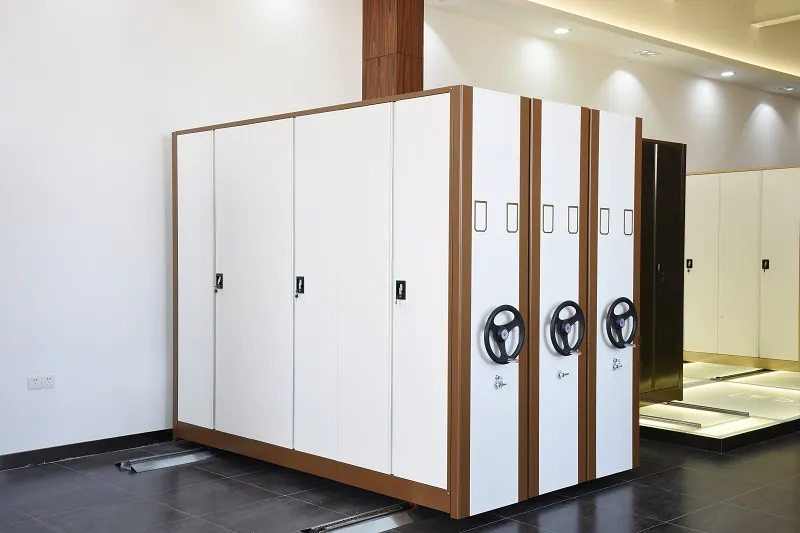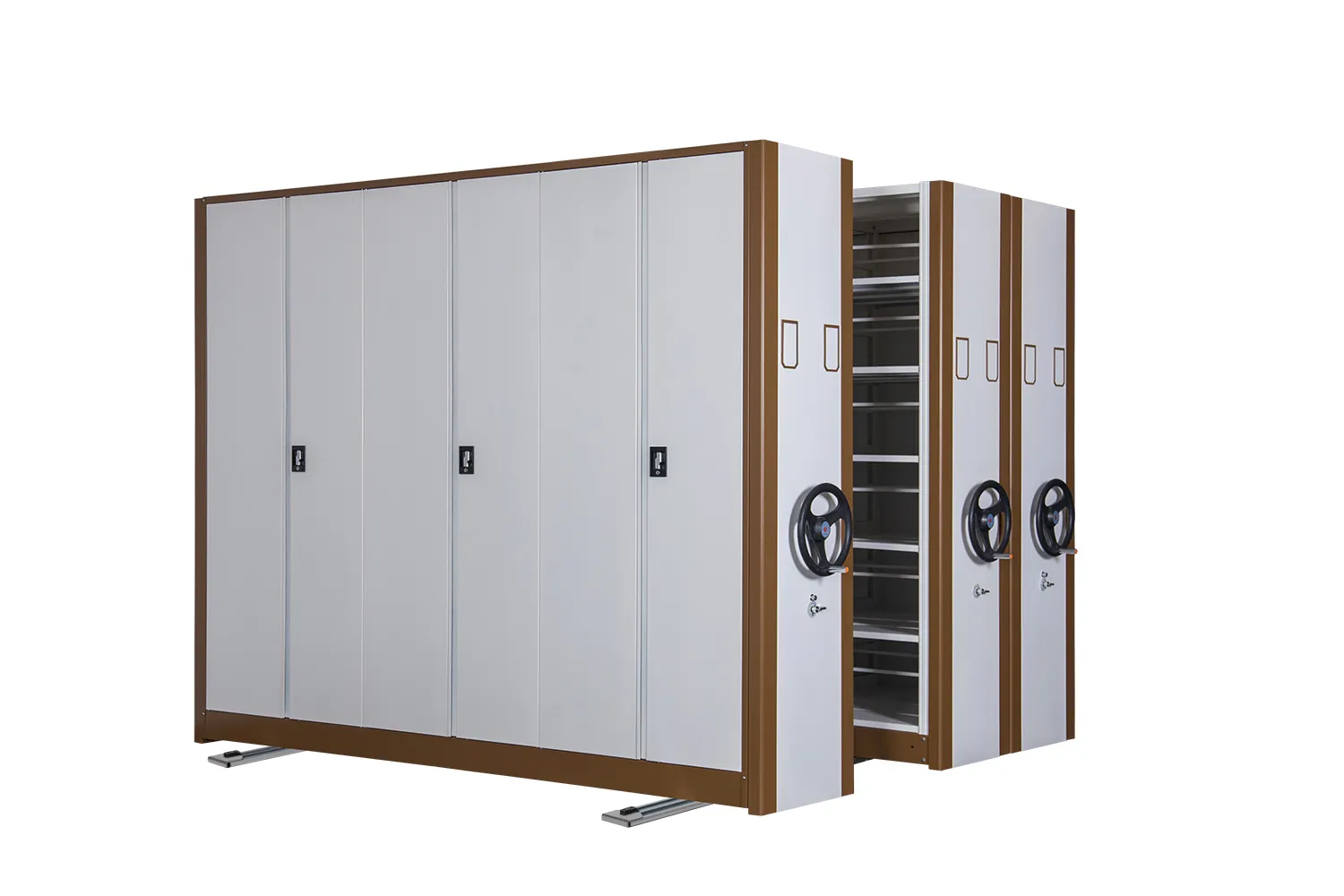Mobile aisle shelving systems are an efficient storage solution that are widely used in libraries, archives, warehouses, museums and other fields. This system maximizes space utilization and significantly increases storage density by introducing movable rails and shelving units onto traditional shelving. This article will detail how mobile aisle shelving systems work, their structural components, installation methods, and their benefits.
Working principle
The core concept of a mobile aisle shelving system is to mount multiple shelving units on movable tracks. By manual or motorized means, users can move these shelving units, creating a temporary passage to access desired storage items. In this way, the system only opens channels when needed, thereby converting the space originally used for fixed channels into storage space and improving storage efficiency.

Structural components
The mobile channel shelving system mainly consists of the following parts:
Track System: Tracks are the foundation of a mobile aisle shelving system and are typically made from high-strength steel. Tracks are installed on the floor to ensure smooth movement of the shelving unit. The design of the track needs to consider the flatness and load-bearing capacity of the ground.
Shelving Unit: A shelving unit is the actual structure for storing items and consists of multiple layers of adjustable shelves and brackets. Shelving unit sizes and materials vary depending on storage needs and environmental conditions.
Drive System:
Manual drive: Uses handles or wheels to push the shelving unit forward. Manual systems are generally suitable for smaller-scale applications.
Electric Drive: Equipped with an electric motor to control the movement of the shelving unit via buttons or touch screen. Motorized systems are suitable for storage environments that require frequent access and larger volumes.
Safety system: including anti-tilting devices, infrared sensors and emergency stop buttons to ensure the safety of people and items during movement.
Installation method
The installation of a mobile aisle shelving system requires professional skills and precise measurements. The main steps are as follows:
Ground preparation: Make sure the ground is flat and has sufficient load-bearing capacity. Perform ground reinforcement or adjustments if necessary.
Install the track: According to the design drawings, accurately position and fix the track. Make sure the tracks are parallel and level to allow for smooth movement of the shelving unit.
Assemble Shelving Units: Assemble shelving units as needed, adjusting shelf heights to accommodate different sized storage items.
Install drive systems and safety devices: Install manual or electric drive systems, set safety devices, and perform testing and commissioning.
System debugging: After installation is complete, conduct a comprehensive test of the entire system to ensure that the shelving units move smoothly and safety devices are working properly.

Advantage
Mobile aisle shelving systems offer the following significant benefits:
High space utilization: By reducing the number of fixed channels, the storage density is greatly increased and the space utilization efficiency is improved.
…
For more detailed information about the introduction of mobile aisle shelving system, please click here: https://www.etegreen.com/en/a/news/introduction-to-mobile-aisle-shelving-system.html



